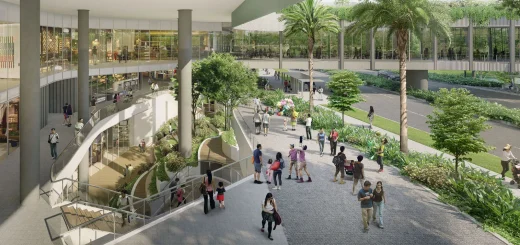Singapore on track to become Innovation Factory
The world’s food system is at a very important crossroads. Because of Covid-19 and the war between Russia and Ukraine, global supply lines have been messed up, people have less access to important food items, and fuel costs have gone through the roof. This has led to a worldwide food crisis. On top of these problems, the industry contributes to environmental risks and is vulnerable to them, which is thought to account for 25% of all damage and costs caused by climate change.
As a country with only cities and that gets more than 90% of its food from 180 other countries and regions, Singapore is especially sensitive to problems in the global food system. Even though its ability to make things locally grew by 13% from 2020 to 2021, bringing the total to $185,2 million, most of the things it makes are still hen shell eggs, certain local veggies, and fish. In 2021, 30%, 4%, and 8% of the country’s total food usage came from these three things.
Malaysia’s recent ban on chicken exports, which has since been lifted, showed how important it is for Singapore to move away from commercially cultivated animal protein and toward more plant-based and cell-culture based alternatives. Singapore is already going down this path, with more than 36 different protein startups based there and the biggest cultivated-meat factory in Asia, which is a good sign of the country’s ability to grow more quickly.
The country also has a problem with not having enough land for farming. Only 1% of the 50km by 27km area is set aside for traditional farming. Singapore’s food problems are made worse by a growing trend of food waste caused by overflow and overstocking. This puts more pressure on the country’s buying needs, and the extra costs of the supply chain are passed on to customers in the form of higher food prices.
Even with these problems, the Singapore Food Agency’s (SFA) plan to diversify food imports has a good chance of making the country’s food system more resilient. At the global level, Singapore is in a good position to drive agri-food innovation and help ease the global food problem.
Four possible worlds that could show Singapore how to make its food system more resilient
We looked at four very different futures, or “scenarios,” and thought about how they would affect the public and private sectors in Singapore. The four possibilities are “Uneven Progress”, “The Rise of Africa”, “Every Country for Itself”, and “Coordinated Step Forward”. Each has a different idea of what the country’s middle-term future will look like. These ideas are based on big things that will affect global food systems over the next five years, such as the state of the world’s farmland, the success of climate action, and global economics and diplomacy.
Uneven progress
In this case, global planning stops, but a few high-income countries in the Global North lead a policy-driven development program that encourages the use of already-existing climate-smart technologies. In low- and middle-income countries (LMICs), like those in Southeast Asia, where high debt and harsh weather events hurt land yield and farming output, inequality is getting worse. Small-scale farmers in Southeast Asia are losing their land because agricultural technology is moving toward corporate and contract farming.
Here, SFA’s strategy for diversifying the food it imports can be improved to help reduce supply chain risks in key supplying countries by using predictive analytics and looking at trade deals again. To reduce supply chain risks, it will be important to develop technologies that help small farmers in LMICs that are important exporters adapt to climate change. To better take part in global supply chains, the private sector will need to put money into decarbonizing their supply chains and making prepared foods that are healthy.
Africa’s growth
In situation two, South-South unity makes it possible for African agriculture to grow faster than ever before. Prices and hunger go down, and there is more food and more food production. But if uneven sharing keeps going on, warming goals will be pushed back. As world trade slows down, Asean gets stronger.
Using trading blocs like the Comprehensive and Progressive Agreement for the Trans-Pacific Partnership and the African Continental Free Trade Area will help the Singapore government. Private companies will benefit from investing in climate-smart technologies to increase production yields and make better use of the country’s “grow overseas” strategy. They can also use blockchain and advanced analytics technology trends to improve food safety, reduce waste and improve supply chains.
Each nation for itself
If this happens, farming trade around the world will drop by 20%. As food supplies get less, prices will go up even more. Extreme weather will happen if we don’t do enough about climate change, which will keep the circle of inequality going.
Since Singapore is a net buyer, the government will have to do a lot to keep food prices stable. Strategic food and crop stocks like rice, corn, and wheat will need to be built up as soon as possible. In the private sector, investments in advanced technologies like hydroponics, aeroponics, vertical farming, and micro-farming, as well as the self-sufficient production of alternative proteins like cell-based meats and mycoproteins, will help the country meet its food security goals while still making money.
Dig into the deep thoughts of our writers and dig into the latest financial and economic trends.
Step forward in a planned way
In the fourth possibility, as more countries start to work together on climate policy and agriculture, climate-friendly innovations will boost global trade, make food supply lines more resilient, and raise the demand for sustainable farming practices.
Countries like Singapore that are ahead of the curve when it comes to technology can help advance food science and take action on climate change as a whole. In the private sector, companies that come up with new ways to make supply lines for basic crops easier and safer and that invest in different grains and proteins like oats, millet, and buckwheat will do well.
Taking steps that won’t make Singapore’s food autonomy less secure in the future
No matter how these possibilities play out in the short to medium term, Singapore’s public and private sectors, academic institutions, and financial institutions must work together to speed up the country’s change into a global agri-food tech innovation machine.
Singapore’s “3 Food Baskets” plan has good roots. It focuses on broadening import sources, growing locally to make sure there are enough backups in case of supply problems, and growing overseas to help local companies grow abroad and send food back.
The Green Plan 2030 is the government’s plan to improve the country’s agri-food system by producing 30% of the country’s food needs locally and in a sustainable way by 2030. A $60 million Agri-Food Cluster Transformation Fund has been set up to help farms increase their output skills and capabilities by giving them money. More food factory has also been build to cater for rise in demand for food processing and central kitchen. One such development is CT FoodNex Food Factory which set to preview in May 2023.
More needs to be done to improve R&D skills and facilities so that agri-food technologies like microbiome enhancing, and enhanced formulation can be tested and used on a larger scale. To go along with these, we need to build a bigger group of local agri-tech skills. In addition to science, it is also important to know how to use digital technologies like Bitcoin, predictive analytics, and AI-based tools.
Singapore can improve its own products and help the countries it buys from increase its farming returns, make its food safer and easier to track, and cut down on waste and running costs by using its growing technological knowledge. This will make Singapore more able to handle unclear prospects and help make the world’s food system more fair.










